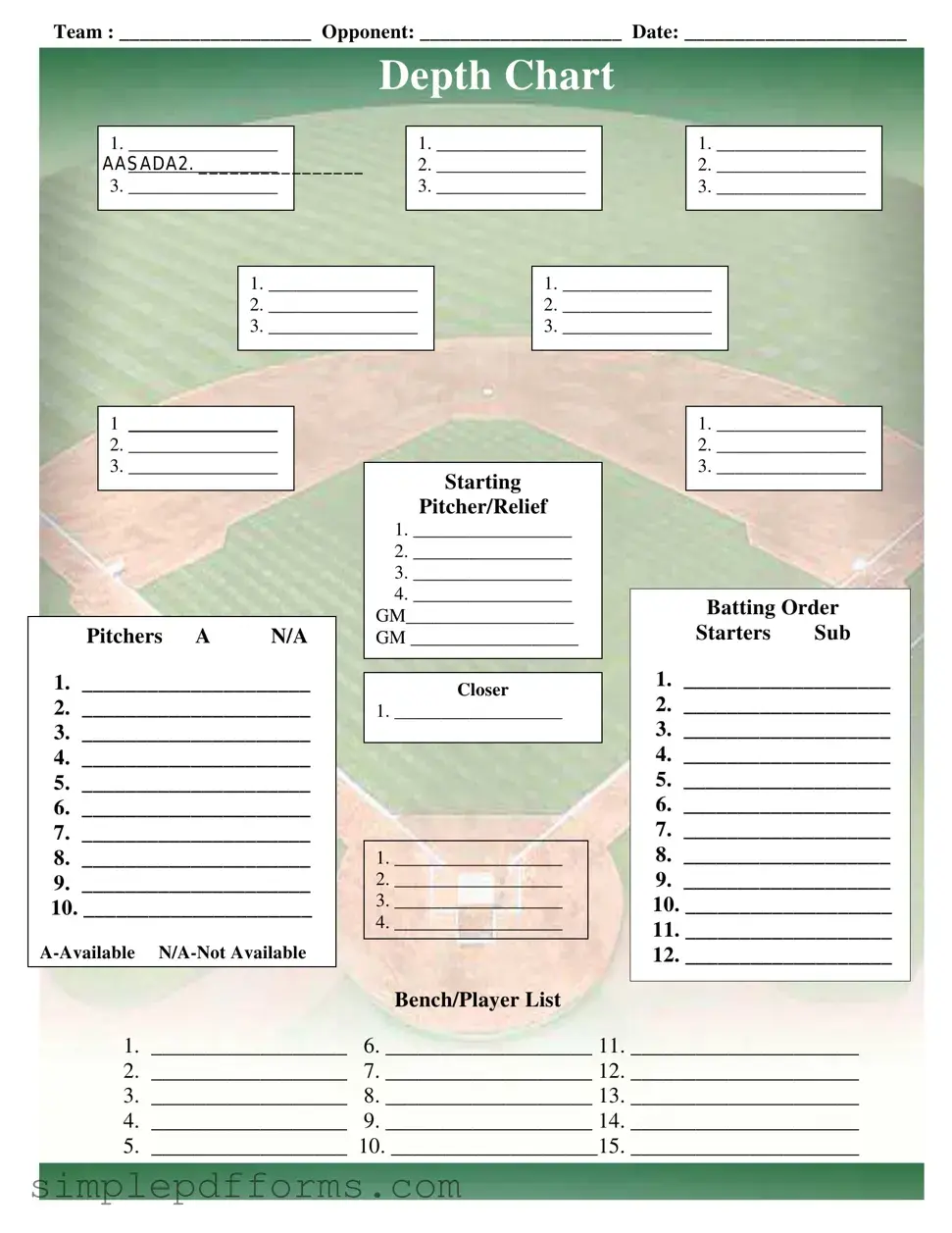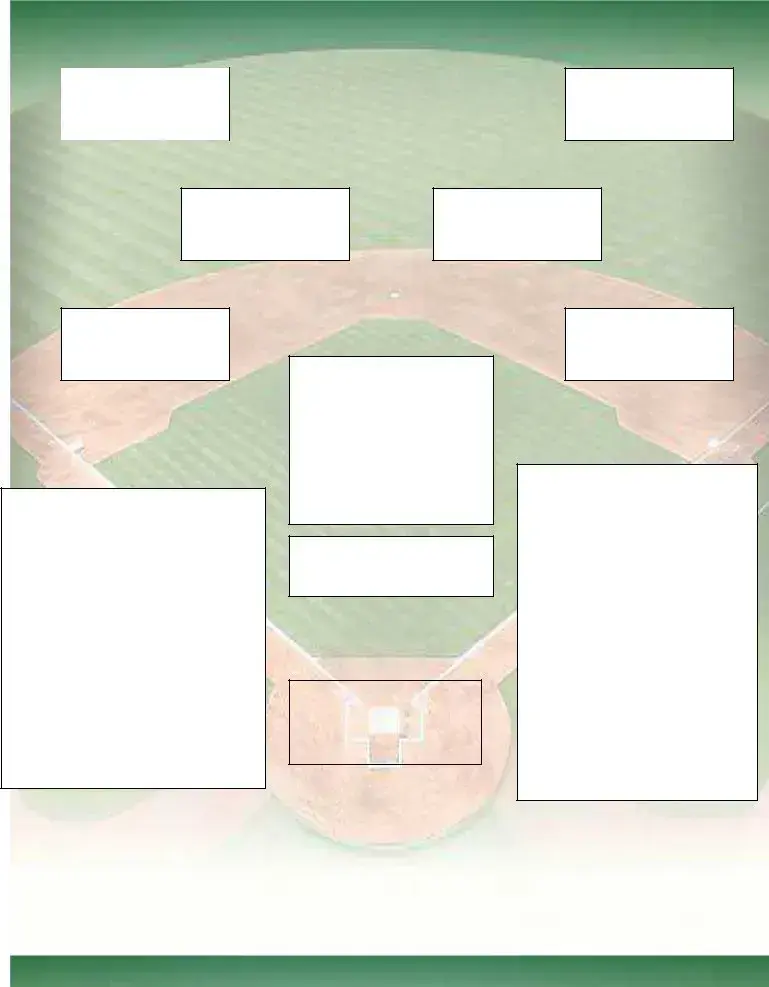Filling out the Baseball Field Lineup form correctly is crucial for ensuring a smooth game day. However, many individuals make common mistakes that can lead to confusion or even impact the game. One frequent error is failing to complete all required fields. Fields such as the team name, opponent, and date should never be overlooked. Without this information, it can be challenging to identify the context of the lineup, which may lead to misunderstandings among coaches and players.
Another common mistake involves inaccurate player placement in the lineup. It's essential to double-check that players are listed in the correct batting order and position. Misplacing a player can disrupt the team's strategy and affect performance. Coaches rely on this information to make real-time decisions during the game, so accuracy is paramount.
Some individuals also neglect to indicate player availability. The section labeled "A-Available" and "N/A-Not Available" is critical for understanding which players can participate. If this information is left blank or filled out incorrectly, it can lead to last-minute surprises when assembling the team. This oversight can hinder the team's ability to adapt to changes in player availability.
Additionally, not clearly distinguishing between starting pitchers and relief pitchers is a mistake that can have serious implications. The form requires specific sections for these roles, and failing to specify who will start or relieve can create confusion during the game. Coaches depend on this clarity to manage their pitching strategy effectively.
Finally, many overlook the importance of listing bench players accurately. The "Bench/Player List" section should be filled out with care. If players are missing from this list, they cannot be substituted in during the game, which could impact the team’s overall performance. Ensuring that every player is accounted for is essential for maintaining team dynamics and strategy.

